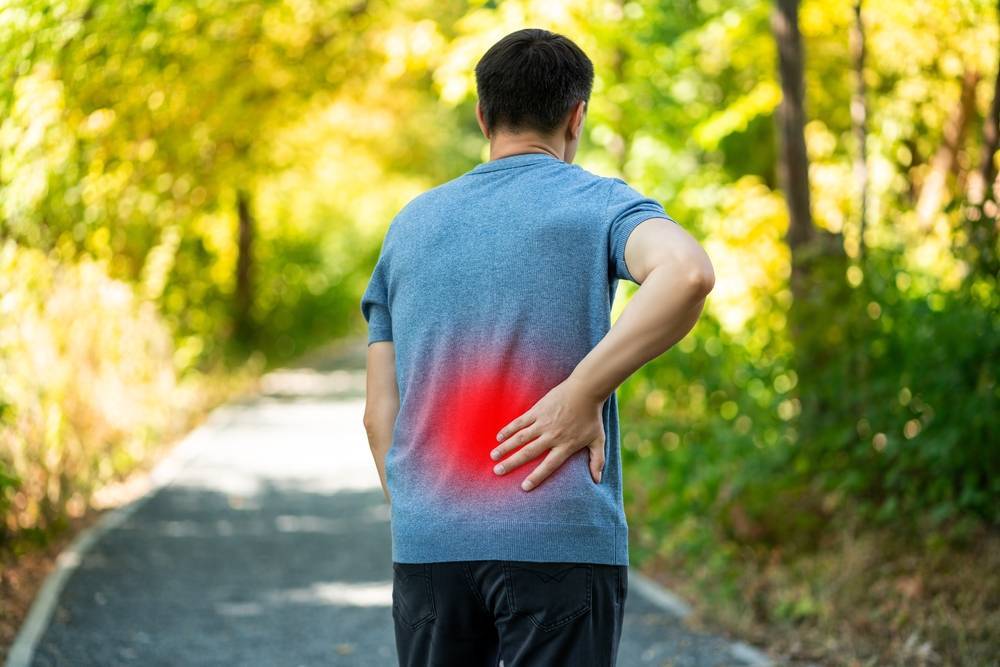Walking can significantly alleviate back pain. The gentle, low-impact exercise of walking enhances muscle function, boosts circulation, and promotes spinal flexibility.
This article explores the science behind how walking helps relieve back pain and offers tips to maximise its benefits.
How Walking Improves Muscle Function
Imagine setting out on a brisk walk through a park. With each step, you’re not just moving forward; you’re engaging various muscle groups, particularly the core, lower back, and leg muscles.
Regular walking acts like a natural workout, gradually strengthening these muscles. As these muscles become stronger, they provide better support for your spine, reducing the strain that leads to pain. Studies reveal that walking regularly can significantly reduce chronic back pain by enhancing core muscle strength and spinal support.
Boosting Circulation with Walking for Back Pain
Picture your blood flowing more freely with every step you take. Walking for back pain isn’t just a simple activity; it’s a way to invigorate your entire circulatory system. Each stride helps to pump more blood to the muscles and tissues surrounding your spine.
This increased circulation is like a fresh stream nourishing a parched landscape. Enhanced blood flow delivers essential nutrients and oxygen to your back muscles and tissues, promoting faster healing and reducing inflammation. Just as a well-irrigated garden flourishes, your muscles, and tissues thrive with better circulation. Research indicates that this boost in blood flow from regular walking can significantly reduce pain and stiffness in the lower back, providing much-needed relief to chronic pain sufferers.
Promoting Spinal Flexibility
Imagine the gentle rhythm of your body as you walk, each step creating a symphony of motion. Walking for back pain engages your spine in a range of natural movements, keeping it flexible and resilient.
Regular walking encourages your spine and its supporting structures to remain limber, reducing the risk of stiffness that often accompanies back pain. Flexibility in the spine allows for better mobility and decreases the likelihood of injury.
A study found that individuals who walk regularly experience improved spinal mobility, which significantly contributes to reducing back pain and enhancing overall spinal health.
Walking for Back Pain Reduces Stress and Enhances Mood
Consider how a walk through a serene environment can lift your spirits. Walking for back pain does more than just alleviate physical discomfort; it also helps reduce stress and enhance your mood.
Chronic back pain often leads to increased stress and a negative emotional state, which can, in turn, exacerbate the pain. Walking triggers the release of endorphins, the body’s natural painkillers and mood enhancers.
This release helps break the cycle of pain and stress, making it easier to manage back pain. Evidence suggests that individuals who engage in regular walking report lower stress levels and improved mental well-being, which directly contributes to less perceived back pain.
Tips for Effective Walking for Back Pain Relief
To maximise the benefits of walking for back pain relief, consider the following tips:
- Start slow: Begin with short, easy walks and gradually increase the duration and intensity.
- Maintain proper posture: Keep your back straight, shoulders relaxed, and avoid leaning forward.
- Choose supportive footwear: Wear shoes that provide good support and cushioning to reduce impact on the spine.
- Incorporate variety: Vary your walking routes to include different terrains, which can engage different muscle groups.
- Stay consistent: Aim for at least 30 minutes of walking most days of the week for optimal benefits.
Key Findings from Research
A systematic review and meta-analysis revealed that walking, either alone or combined with other exercises, significantly improves pain, disability, quality of life, and fear-avoidance behaviours in individuals with chronic low back pain.
In a comparison between walking and mind-body therapies, walking was shown to be slightly superior in reducing pain and activity limitation in the intermediate term.
Moreover, a study analysing data from the Korean National Health and Nutrition Examination Surveys found that walking more than 90 minutes per week was associated with a lower risk of self-reported low back pain in individuals over 50 years of age. Walking for more than three days per week, for over 30 minutes at a time, significantly lowered the risk of back pain.
Additionally, a randomised controlled trial comparing aerobic walking to muscle strengthening exercises found that both interventions significantly improved all outcome measures, indicating that walking is as effective as specific low back exercises for improving functional abilities.
Walking: A Natural Remedy for Back Pain
Walking for back pain is a natural and accessible remedy that can significantly enhance your quality of life. By integrating regular walks into your daily routine, you can strengthen your muscles, improve circulation, enhance spinal flexibility, and reduce stress. These benefits collectively contribute to reducing back pain and promoting overall spinal health.
References
- Vanti, C., Andreatta, S., Borghi, S., Guccione, A. A., Pillastrini, P., & Bertozzi, L. (2017). The effectiveness of walking versus exercise on pain and function in chronic low back pain: a systematic review and meta-analysis of randomized trials. Disability and Rehabilitation, 41(6), 622–632. https://doi.org/10.1080/09638288.2017.1410730
- Nduwimana, I., Nindorera, F., Thonnard, J. L., & Kossi, O. (2020). Effectiveness of walking versus mind-body therapies in chronic low back pain. Medicine, 99(35), e21969. https://doi.org/10.1097/md.0000000000021969
- Park, S. M., Kim, G. U., Kim, H. J., Kim, H., Chang, B. S., Lee, C. K., & Yeom, J. S. (2019). Walking more than 90minutes/week was associated with a lower risk of self-reported low back pain in persons over 50years of age: a cross-sectional study using the Korean National Health and Nutrition Examination Surveys. the Spine Journal/the Spine Journal, 19(5), 846–852. https://doi.org/10.1016/j.spinee.2018.11.007
- Shnayderman, I., & Katz-Leurer, M. (2012). An aerobic walking programme versus muscle strengthening programme for chronic low back pain: a randomized controlled trial. Clinical Rehabilitation, 27(3), 207–214. https://doi.org/10.1177/0269215512453353
- Sitthipornvorakul, E., Klinsophon, T., Sihawong, R., & Janwantanakul, P. (2018). The effects of walking intervention in patients with chronic low back pain: A meta-analysis of randomized controlled trials. Musculoskeletal Science & Practice/Musculoskeletal Science and Practice, 34, 38–46. https://doi.org/10.1016/j.msksp.2017.12.003

